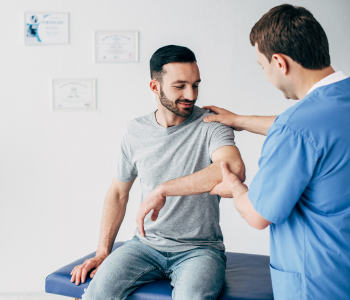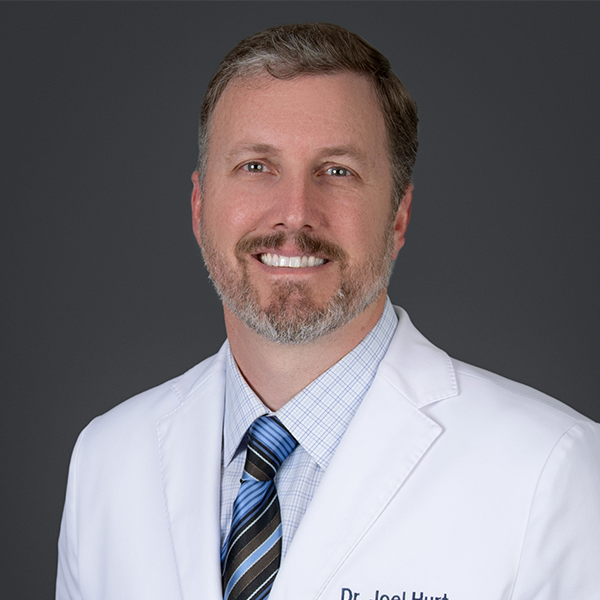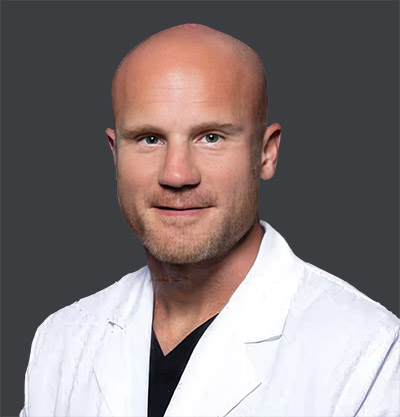Reclaim Your Shoulder Strength and Mobility
Expert Total Shoulder Replacement in Central Texas at Austin Orthopedic Institute
Chronic shoulder pain holding you back? Don’t let a damaged joint limit your life. At Austin Orthopedic Institute, our experienced team of orthopedic surgeons specializes in total shoulder replacement surgery, helping patients regain pain-free movement and rediscover their active lifestyles.
Why Choose Us
Patient-Centered Care
Experienced Surgeons
Successful Outcomes
Our Providers
Real Stories from Real Patients
“Austin Orthopedic Institute went above and beyond to ensure that my care was top notch. From my initial exam to the surgery it was truly 5 stars. Follow up phone calls daily for the first week post op which covered any gaps that I had. Mostly due to information overload. Dr. Hurt did a great job as well as all of his staff. This isn’t my first rodeo with shoulder surgery but my expectations were exceeded exponentially. Thank you all.”
– Mark L.
“Dr. Robin & his staff are exceptional. I had 5-Star treatment & Experience with his Team. Dr. Robin is Professional, Kind & Encouraging. Dr. Robin performed my Total Reverse Shoulder Replacement Surgery & I am doing fantastic.🙋♀️ Ready to get back into the “Swing of Life” and my love for Coaching the game of Golf 🏌️♀️⛳️ I will always be grateful! To Dr. Robin & his great staff!”
– Monika M.
“Dr. Kilbride and his team are extremely friendly and helpful. His bedside manner was excellent, and he did a great job clearly explaining what was wrong with my shoulder and how he planned to fix it surgically. His care team frequently follow-up with me via phone after my procedure and made themselves available for any questions I had. Additionally, I was met with prompt and helpful responses anytime I contacted their office.”
– Will Z.
About Shoulder Replacement Surgery

Are You A Candidate for Total Shoulder Replacement?
- Severe shoulder pain that interferes with daily activities (dressing, reaching).
- Significant stiffness and limited range of motion in the shoulder.
- Persistent pain despite non-surgical treatments like medication, injections, or physical therapy.
- Arthritis causing significant damage to the joint surface, leading to pain and dysfunction.
Symptoms of Shoulder Arthritis
- Pain and stiffness in the shoulder, especially at night or with certain activities
- Weakness in the shoulder, making it difficult to lift your arm
- Clicking or popping sensation in the shoulder
- Difficulty reaching overhead or behind your back
Don’t wait to live a pain-free life. Schedule a consultation with our shoulder replacement specialists today.
Understanding Total Shoulder Replacement
Types of Shoulder Replacement
- Anatomic Total Shoulder Replacement: This procedure replaces both the ball (humeral head) and the socket (glenoid) of the shoulder joint with artificial implants. It’s typically recommended for severe arthritis or significant damage to both the ball and socket, causing pain and limited mobility.
- Reverse Total Shoulder Replacement: This procedure reverses the positions of the implants compared to a traditional total replacement. The metal ball is implanted on the socket side, while a plastic socket is placed on the humeral head. This approach is often preferred for patients with rotator cuff tears that are irreparable or severely weakened. The reverses design allows the deltoid muscle, a stronger muscle, to take over the function of the rotator cuff, leading to improved strength and function.
- Hemiarthroplasty (Partial Shoulder Replacement): This procedure replaces only the ball (humeral head) of the shoulder joint with an artificial implant, while the natural socket (glenoid) is preserved. Hemiarthroplasty may be suitable for specific fractures or injuries where only the ball is damaged, and the socket remains healthy.
Choosing the Right Option
During your consultation, our shoulder experts will carefully evaluate your specific condition, including the type and severity of damage, your overall health, and your activity level. This comprehensive assessment allows us to recommend the most suitable shoulder replacement option for your needs and goals.
The Surgical Process
Before Surgery
- Consultation: Discuss your medical history, symptoms, and expectations with your doctor.
- Imaging Tests: X-rays will provide a detailed view of your shoulder joint.
- Planning: Your doctor will determine the appropriate implant size and surgical approach.
- Physical Therapy: Pre-operative exercises can improve muscle strength and flexibility, aiding recovery.
During Surgery
- General anesthesia is used to keep you asleep and comfortable throughout the procedure.
- The surgeon removes the damaged cartilage and bone and implants the artificial components.
- The incision is closed with surgeons preferred skin closure (sutures, staples).
After Surgery
- Pain Management: Medication will be provided to manage post-surgical pain.
- Physical Therapy: Rehabilitation exercises are crucial to regain strength, flexibility, and range of motion.
- Recovery: You will use a sling support initially.
- Follow-up Appointments: Regular visits with your doctor are essential to monitor progress and ensure proper healing.
Living Life to the Fullest, Pain-Free
Total shoulder replacement can significantly improve your quality of life. Our team at Austin Orthopedic Institute will be with you every step of the way, from the initial consultation to comprehensive post-operative care.
For a more specific understanding of your situation and suitability for total shoulder replacement, consult with our experienced shoulder specialists at Austin Orthopedic Institute. We offer personalized consultations and comprehensive care throughout your journey.
Patient FAQ
Pain relief: Significant reduction in shoulder pain and stiffness, allowing for increased mobility.
Increased range of motion: Regaining the ability to reach overhead, dress independently, and perform daily activities with greater ease.
Enhanced quality of life: Improved ability to participate in hobbies, work, and social activities that were previously limited by shoulder pain.
The surgery itself usually takes 1-2 hours. However, the total time in the operating room may be longer depending on pre-operative procedures and post-operative care.
While you’ll likely have some initial limitations, physical therapy will focus on regaining strength and mobility in your shoulder. You may use a sling for support initially, but you’ll gradually regain full use of your arm.
Recovery times vary depending on individual factors. Typically, patients require physical therapy for several weeks or months to regain full strength and mobility. However, significant pain relief and improved function are usually noticeable within weeks of surgery.
As with any surgery, there are potential risks associated with total shoulder replacement. These include infection, blood clots, bleeding, and nerve damage. Your doctor will discuss these risks in detail during your consultation.
Modern shoulder replacements are designed to last for many years, often exceeding 15-20 years. However, factors like activity level and weight can influence their longevity.
Maintain a healthy weight: Reducing excess weight can significantly benefit recovery.
Strengthen your muscles: Pre-operative physical therapy can improve muscle strength and support recovery.
Stop smoking: Smoking can impede healing and increase surgical risks. Discuss smoking cessation options with your doctor.
Arrange for post-operative support: Having help with daily activities at home during the initial recovery period can be beneficial.
The time frame for returning to activities like work or sports depends on the type of work you do and your overall fitness level. Your doctor will provide a personalized timeline based on your recovery process.
Our Locations
Austin
(512) 856-1000
11675 Jollyville Road Suite 207 Austin, TX 78759
HOURS
Friday: 8 AM – 12 PM
Staff is available by phone until 5 pm.



